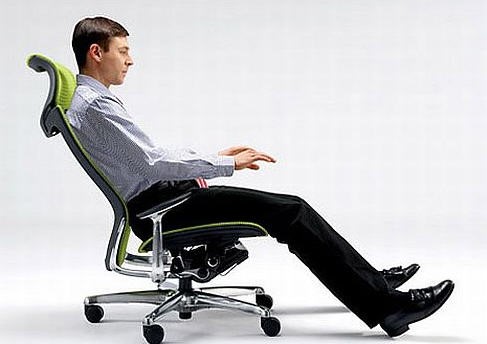
If you find yourself tired and achy after a day of work in your home office, it’s likely that the culprit could be your chair. The quality and comfort of your office chair affects your health and productivity. People are sitting down more than ever, and having an ergonomic and comfortable chair at your desk could totally improve the way you feel after a day at the desk. Whether you’re shopping for a new task chair or examining the one you’ve got, here are some must-have features to ensure your day at the desk doesn’t become a nightmare.
Adjustable Height
Depending on your desk, the optimal height for a desk chair varies, so make sure your chair offers adjustable height. A seat height that ranges from about 16 to 21 inches off the floor should work for most people. You want to be able to keep your feet flat on the floor with thighs horizontal and arms even with the height of the desk. You’ll know positioning is too high if there is too much pressure behind the knee and too low if the knees are higher than the hips.
A Reclining Seat Back
According to the experts, sitting at a reclined 130̊ angle puts the least strain on your back. Rigid 90̊ seatbacks are fine short-term, but a full day of work in a chair that doesn’t flex or recline can spell a visit to the chiropractor later on. Sitting for long periods without support for your lower back will strain your spine and lead you to slouch, so make sure you find a chair with lumbar support. You’ll want to keep the lumbar support of the backrest in your lumbar region (around the waist).
Armrests
The recommended arm position to reduce strain is to keep your upper arms close to vertical and your forearms close to the horizontal plane. The armrests should, at a minimum, be height adjustable. A pivoting arm is also a useful feature as it will allow some users to better position the arms for support while typing. Sometimes, you’ll be working on something that doesn’t require the armrests, in which case some models have the ability for you to “swing back” the arms to have more room to maneuver.
A Deep Seat Depth
To keep your knees in great shape, you need a seat with the right depth for your body. An adjustable seat depth lets you slide the seat backward or forward to suit your leg length. Sitting with your back against the backrest, a proper seat depth should leave between 2 and 4 inches between the seat of the chair and the back of your knees. If the seat is too long, you may be inclined to prop yourself forward, losing the benefit of a back rest. This causes strain on your legs and back.
Proper Wheels
Not all rolling chairs are created equal. If your desk is on a hard surface, find a chair with soft rubber wheels. If your workspace is carpeted or sits on top of a rug, hard wheels will help you navigate best. Make sure to find a chair base with at least five spokes, as four spoke bases tend to tip over when reclining back. We have a great selection of chairs from HON and Lorell that exemplify these ergonomic features and that can keep your back happy and won’t break the budget.




